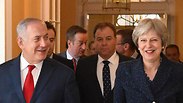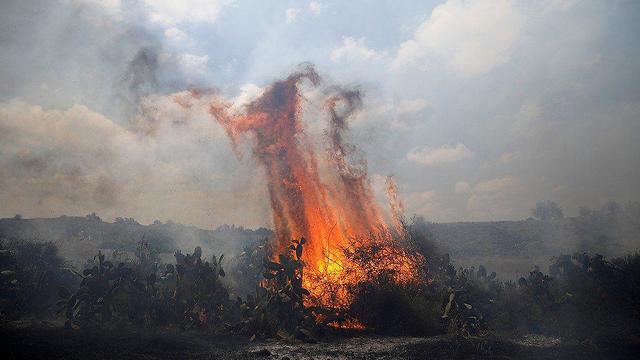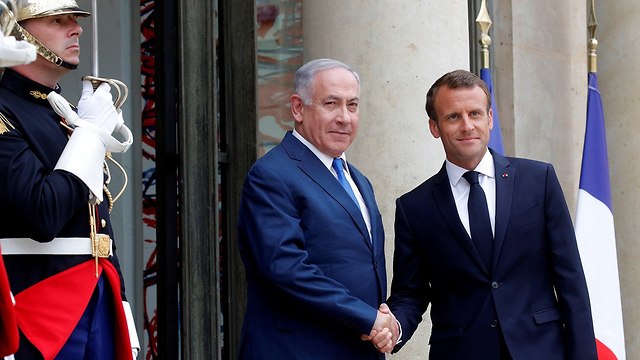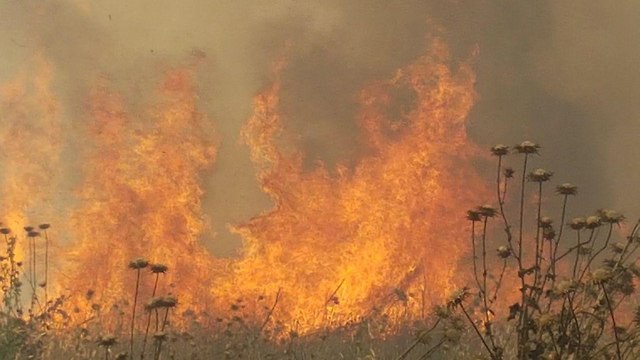

Deal with Gaza now, leave Iran for later
Op-ed: PM Netanyahu went to Europe to discuss two things: Iran and Iran. Meanwhile, our southern fields are burning, the infiltration attempts and rocket fire are continuing, and the Gaza vicinity residents have the right to demand a practical solution to the impossible reality they are living in.
The funds, which come from taxes imposed on goods making their way from Israel’s ports to the territories, should cover the damages inflicted on the southern residents by the incendiary kites.
So far, Israel’s attempts to impose economic sanctions on the Palestinian Authority by forfeiting, boycotting or freezing the tax funds it collects for the Palestinians have ended with the funds being transferred to the PA several months later at the most.
In 2015, for example, Netanyahu approved the transfer of PA funds that had been frozen in previous months following a recommendation from Defense Minister Moshe Ya’alon, the IDF and the Shin Bet. Netanyahu explained that his decision was based on humanitarian considerations and an overall view of Israel’s interests. In short, empty words, then and now. Words aimed at satisfying the political base.
Meanwhile, our southern fields are burning. Thousands of dunams of forests and fields have been consumed so far by 600 flaming kites launched from the strip into the Gaza vicinity community. The attempts to infiltrate Israel are continuing too, and so is the mortar and rocket fire.
And that’s not all: The Naksa Day protests, marking the Arab armies’ defeat in 1967, are expected to take place near the border on Friday, and there’s no way of knowing how many Palestinian will participate in them and how they will end. It seems Hamas and the other organizations in the strip are unimpressed by Defense Minister Avigdor Lieberman’s threats to “settle the score.”
We must admit that after years of rounds of fighting and bragging from the prime minister and his ministers, the reality on the ground is terribly simple: We keep suffering blows, and they keep dealing us blows. Each side with its own measures. We activate the Air Force, and they send flaming kites across the border.
On this background, the tens of thousands of Israelis living in the south have the right to demand a solution or a response from the government to the impossible reality they are living in—not threats to kill Hamas leaders or statements about toppling the Hamas rule, but practical proposals that would give both sides some hope.
At the moment, there is no plan or horizon that could indicate a point of exit from this brutal reality. Former Prime Minister Ariel Sharon used to offer his colleagues and decision makers, both on personal issues and on national topics, the advice of Chazon Ish, Rabbi Avraham Yeshaya Karelitz, one of the greatest halachic decisors of the previous century. According to Chazon Ish, if you have to solve two problems at the same time, first solve the urgent problem which requires immediate attention, and only then deal with the less pressing problem.
If only Netanyahu had implemented this advice, and instead of travelling to Europe, had stayed in Israel and rolled up his sleeves to try to deal with the roots of the problem the Gaza Strip is inflicting on every Israeli. Talking about bringing down Hamas and about targeted assassinations of Gaza’s leaders (“his blood is on his own head”) isn’t serious. The biggest absurdity in the government speakers’ recent messages is that the system is giving priority to the northern arena over finding a solution to the threats from the south.
This is where we should say to the prime minister and the cabinet: Stop dealing with Iran. Leave something for the Americans and world leaders. The rage of millions of Palestinians in the strip isn’t because of Iran, and the Israeli-Palestinian conflict requires some sort of arrangement.
But Netanyahu announced that he would talk about three issues in Europe: Iran, Iran and Iran. He seems to have borrowed this sentence from a real-estate agency’s commercial, which declares that an apartment’s value is measured according to three parameters: Location, location and location. That may be good for commercials, but it isn’t very practical when you look at the burning fields in the Gaza vicinity.



















